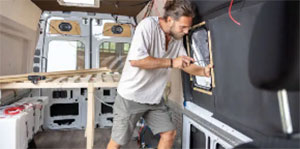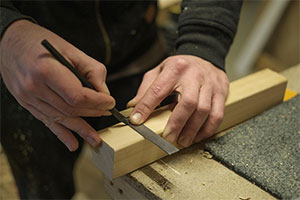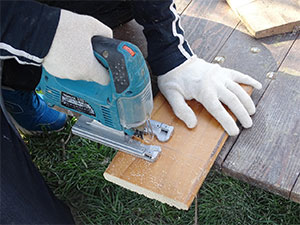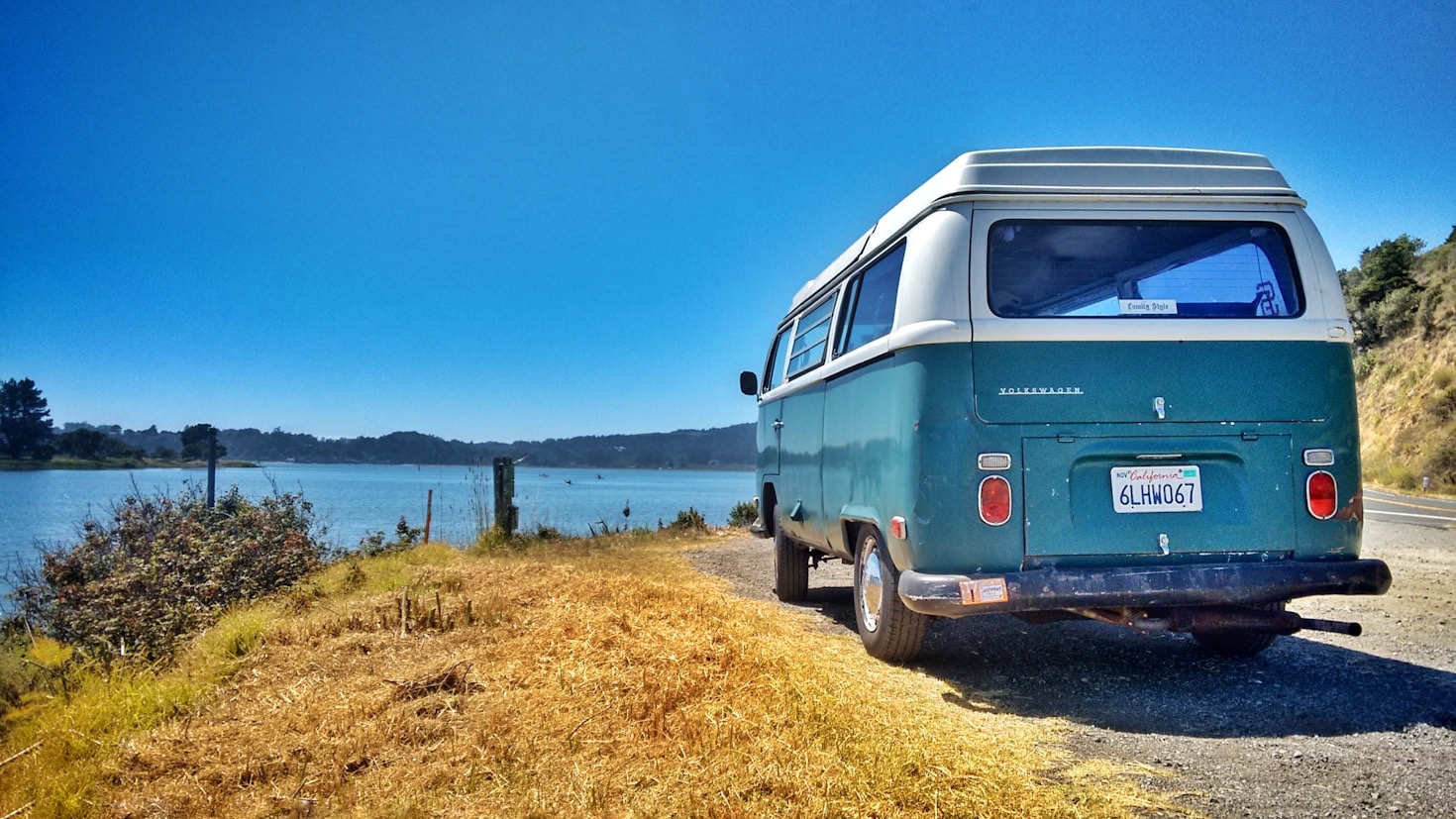Cost-Effective Strategies for the DIY Enthusiast
Building a campervan on a budget is more popular than ever. Many people dream of hitting the road without blowing their savings.
The good news? You can turn a simple van into a cozy, functional home with smart choices and a little effort.
 You don’t need to spend a fortune to create a space that feels just right. Your goal is to find hacks that save money while making your campervan comfortable and practical.
You don’t need to spend a fortune to create a space that feels just right. Your goal is to find hacks that save money while making your campervan comfortable and practical.
Choosing the Right Base Van to Maximise Budget Efficiency
Selecting a Budget-Friendly Van Model
Picking the right van makes all the difference when you’re building on a budget.
Popular options include the Ford Transit, Mercedes Sprinter, and Vauxhall Vivaro/Renault Trafic.
These vans cans be picked up quite affordably, they’re generally reliable, and supported by loads of aftermarket parts.
Used, they cost less upfront and hold their value well.
For example, a used Ford Transit can start as low as £1,500 to £2,000, and high mileage isn’t really an issue if they’re maintained properly. In fact, my Son has a 2003 Vauxhal Vivaro that’s done over 300,000 miles and just flew through it’s last MoT.
Buying Used Vans for Savings
Buying a used van saves thousands compared to new.
 Inspect the vehicle thoroughly though: Check for rusty body work, engine wear, and chassis issues. If you’re not confident doing it yourself, make sure you take someone with you who is.
Inspect the vehicle thoroughly though: Check for rusty body work, engine wear, and chassis issues. If you’re not confident doing it yourself, make sure you take someone with you who is.
Unless you’re buying direct from a dealer (which obviously increases the costs), once the money changes hands, any issues become your problem!
Negotiating the price can also bring big savings.
Essential Maintenance and Repairs for Cost Savings
Campervan maintenance is something that often gets forgotten about. It’s so easy to dismiss little issues, or put them off until until they’re not so little any more.
But, if you take care of basic maintenance, you’ll help keep the van reliable. Replacing a timing belt or fixing a small leak is cheaper than needing to change a damaged engine, or replacing all the water damaged items inside.
You can use online resources and local shops for affordable parts and most simple tasks can be completed by anyone with basic skills.
Planning and Designing a Cost-Effective Layout
Prioritising Essential Features
Think about what’s really needed. A bed, basic kitchen, and storage are must-haves.
Luxury items like fancy lighting or a TV are nice but can come later.
Use space wisely—opt for vertical storage and multi-purpose furniture. That way, you get a comfy setup without extra costs.
Using Free and Low-Cost Design Tools
 Design your layout with free tools like Floorplanner. They help you better visualise your space, without hiring an professional.
Design your layout with free tools like Floorplanner. They help you better visualise your space, without hiring an professional.
Creating a plan first, can save you a lot of money later, and makes sure you don’t buy unnecessary parts. Take your time to experiment with different setups before starting construction.
Incorporating Multi-Functional and DIY Solutions
Save money with DIY solutions like foldable beds or removable counters. Use versatile furniture that can serve more than one purpose.
For materials, source inexpensive plywood or even repurpose old furniture to save cash. A well-thought-out layout can reduce overall build costs by up to 30%, making your project more affordable.
Cost-Effective Materials and Insulation Choices
Affordable Insulation Options
Insulation keeps your campervan comfortable without spending a lot.
Foam board insulation is cheap and easy to install. Recycled plastic bottles is a budget-friendly eco option too.
Check the R-value, which measures insulation efficiency. Experts suggest combining layers for better warmth without overspending.
Budget-Friendly Building Materials
 Use plywood, reclaimed wood, or lightweight panels. They’re much cheaper than specialised van interior panels. Avoid pricey materials unless absolutely necessary.
Use plywood, reclaimed wood, or lightweight panels. They’re much cheaper than specialised van interior panels. Avoid pricey materials unless absolutely necessary.
Look for deals at reclamation yards, or online marketplaces. Reusing materials not only saves money but is also eco-friendly.
Smart Purchasing Strategies
Create a list of all materials needed. Watch for online clearance sales and even check out local thrift stores., or charity shops.
Buying in bulk can also lower costs. Shop around and compare prices so you get the best deals for your money. Patience pays off when sourcing your building supplies.
DIY Construction Hacks to Save Money
Repurposing and Upcycling Materials
Old pallets, furniture, or household items can become shelves, countertops, or even beds. For example, an old cupboard door can become a sturdy table.
I’ve even used spare laminate flooring to clad cupboards before.
Upcycling reduces waste and costs. Plus, it adds a personal touch to your campervan.
Tackling Simple Installations Yourself
 Installing flooring, attaching insulation, or building shelves can be straightforward with online tutorials. Many blogs and forums offer step-by-step guides.
Installing flooring, attaching insulation, or building shelves can be straightforward with online tutorials. Many blogs and forums offer step-by-step guides.
Doing as much as you can yourself, can save hundreds of pounds and gives you the satisfaction of crafting your van.
Leveraging Community and Online Resources
Join van life groups on social media. Members share plans, free templates, and even free materials.
These communities are a goldmine for tips on saving money. They can also motivate you to finish your build with confidence.
Additional Tips for Keeping Costs Low
- Start small. Focus on minimal upgrades first. You can add fancy features later.
- Stay patient. Wait for sales or discounts to buy key items.
- Make a detailed budget. Track everything to avoid overspending.
- Consider crowdfunding if needed. Many DIY van builders get support online.
- Remember, the average DIY campervan conversion using new items, costs between £10,000 and £20,000. You can do better with careful planning.
My last conversion was my Renault Trafic SWB. After spending a few weeks looking, I managed to pick up a 2008 van with 150,000 miles and a new MoT, for £900. After spending just £800, it fits my needs perfectly 🙂



Conclusion
Building a campervan on a budget is totally doable.
Pick the right van, plan your layout smartly, use affordable materials, and do as much as you can yourself.
Upcycling and community tips can cut costs and boost creativity. With patience and smart choices, you’ll have a cozy, functional home on wheels without spending a fortune.
Start today—your adventure awaits,and your wallet will thank you for it.

As a full-time carer, I’m not a ‘true’ vanlifer! But, I do spend a lot of my free-time travelling to and staying in different towns and villages around the UK. I enjoy the freedom and control that staying in my van gives me, and I want to share that experience with anyone else who’s thinking about giving it a go.



